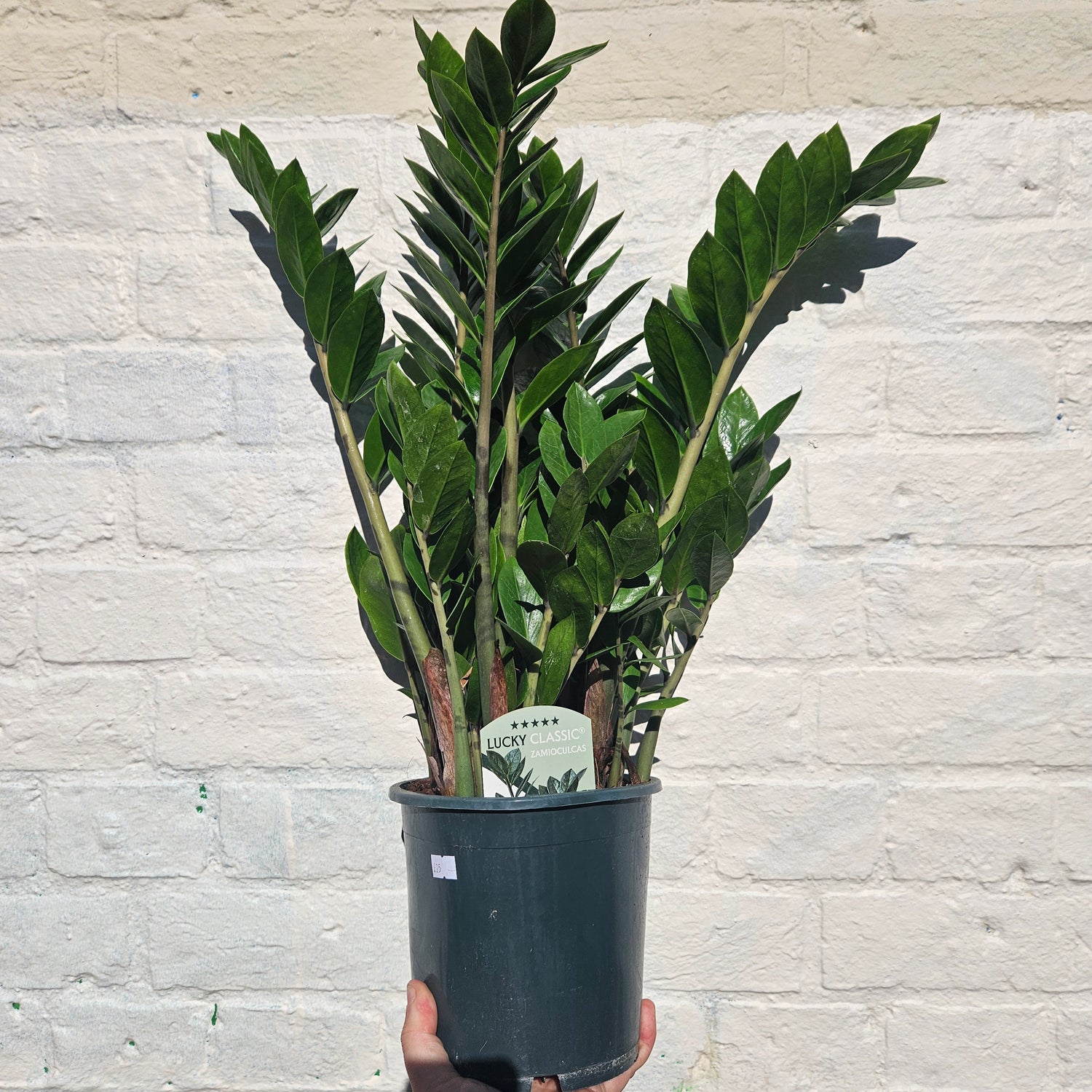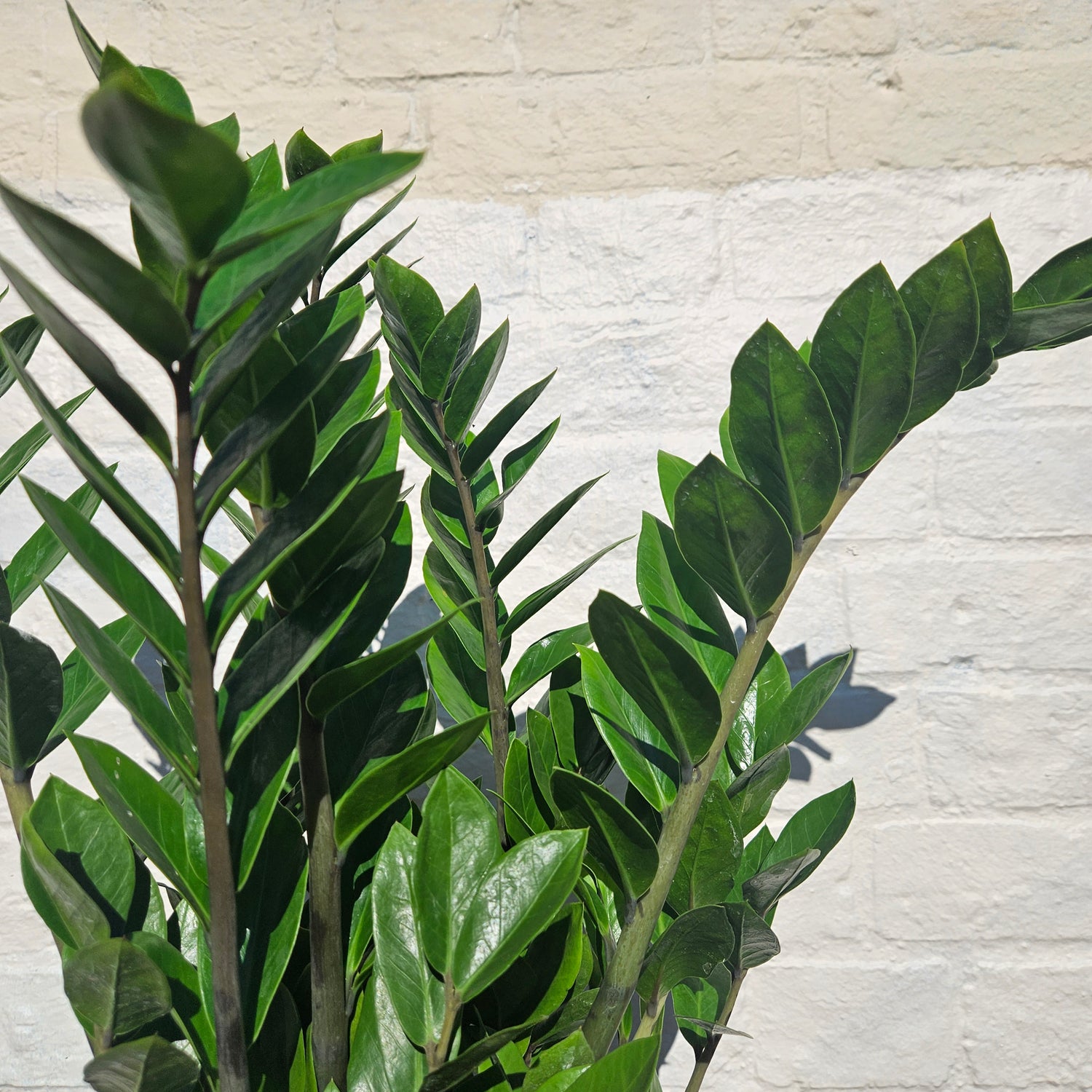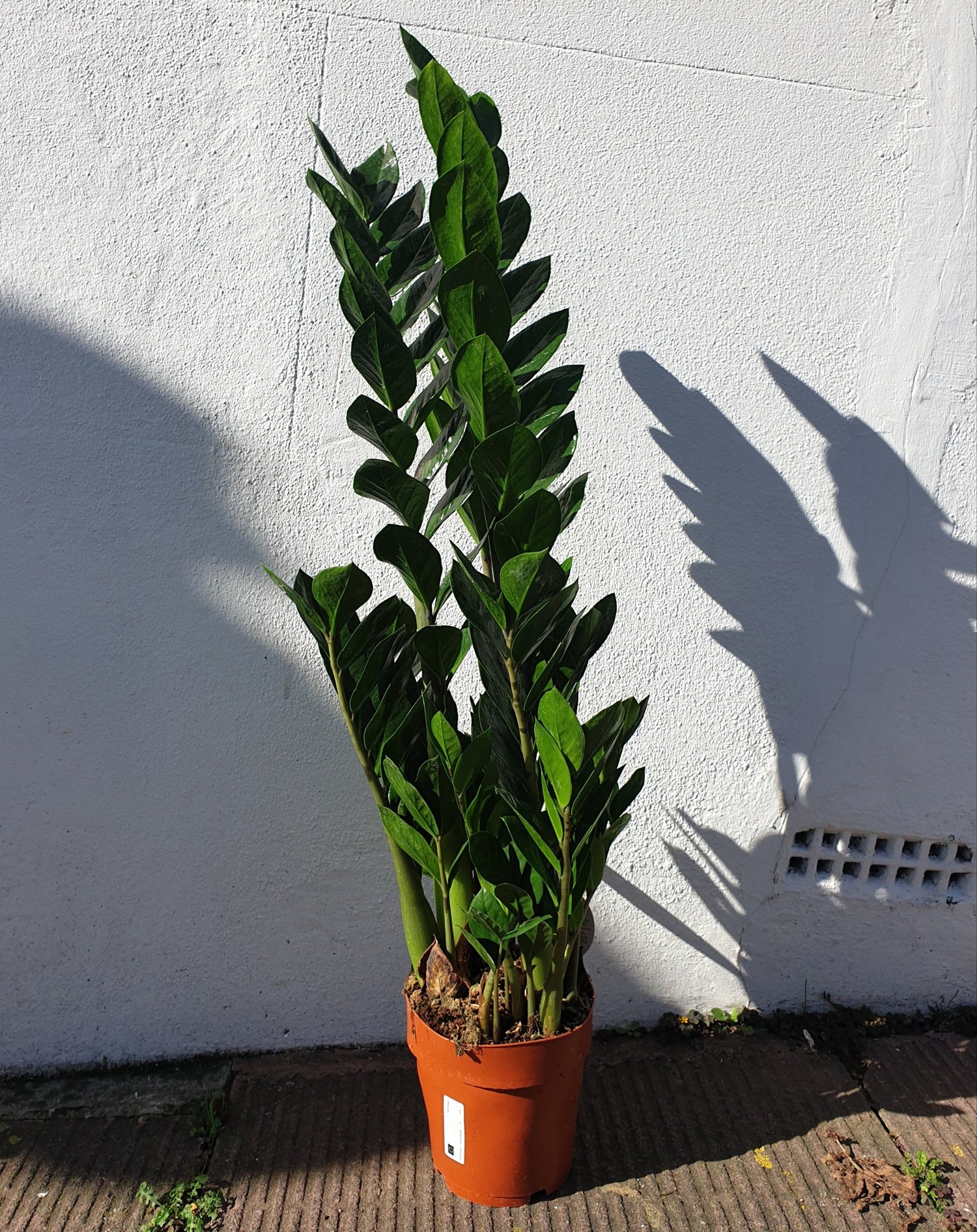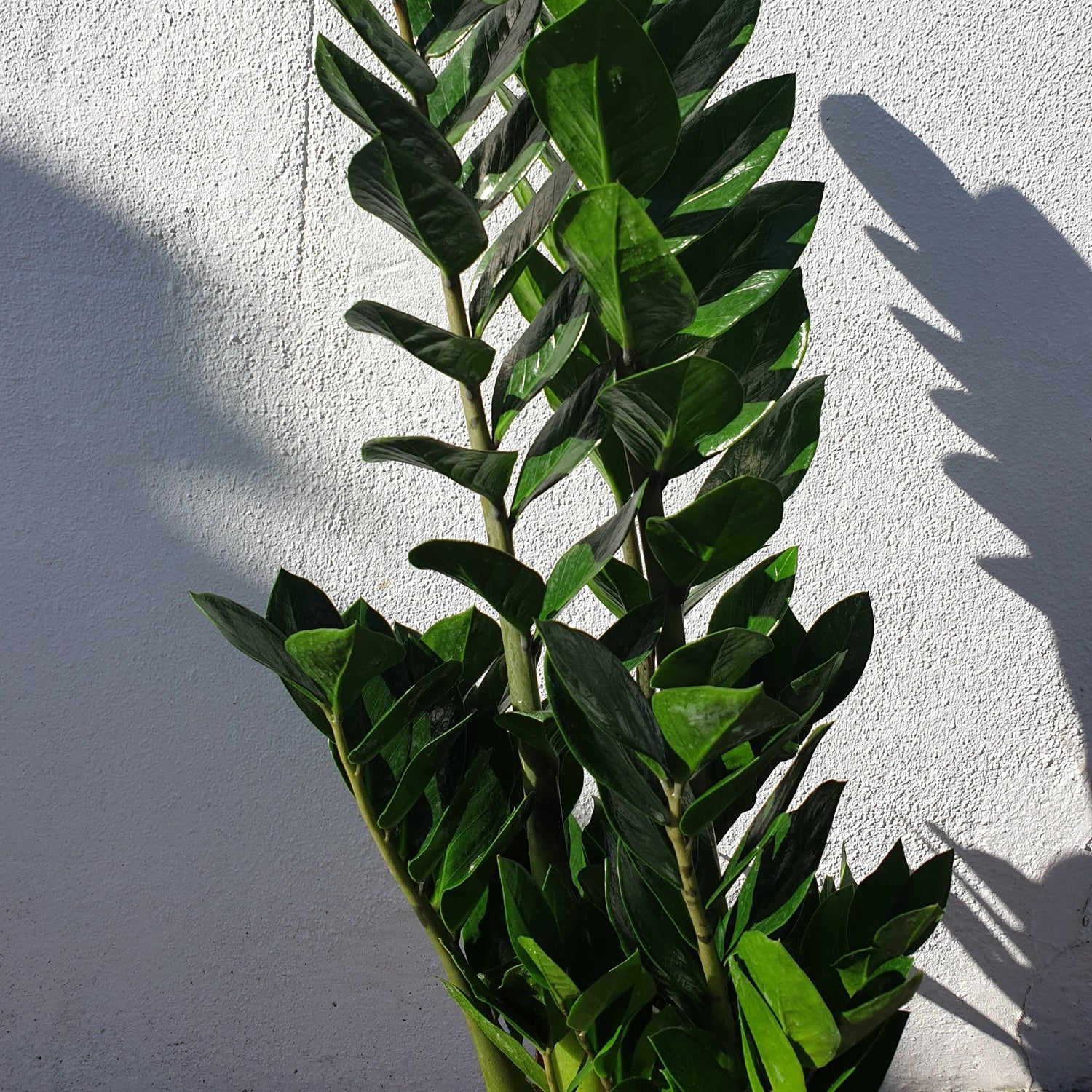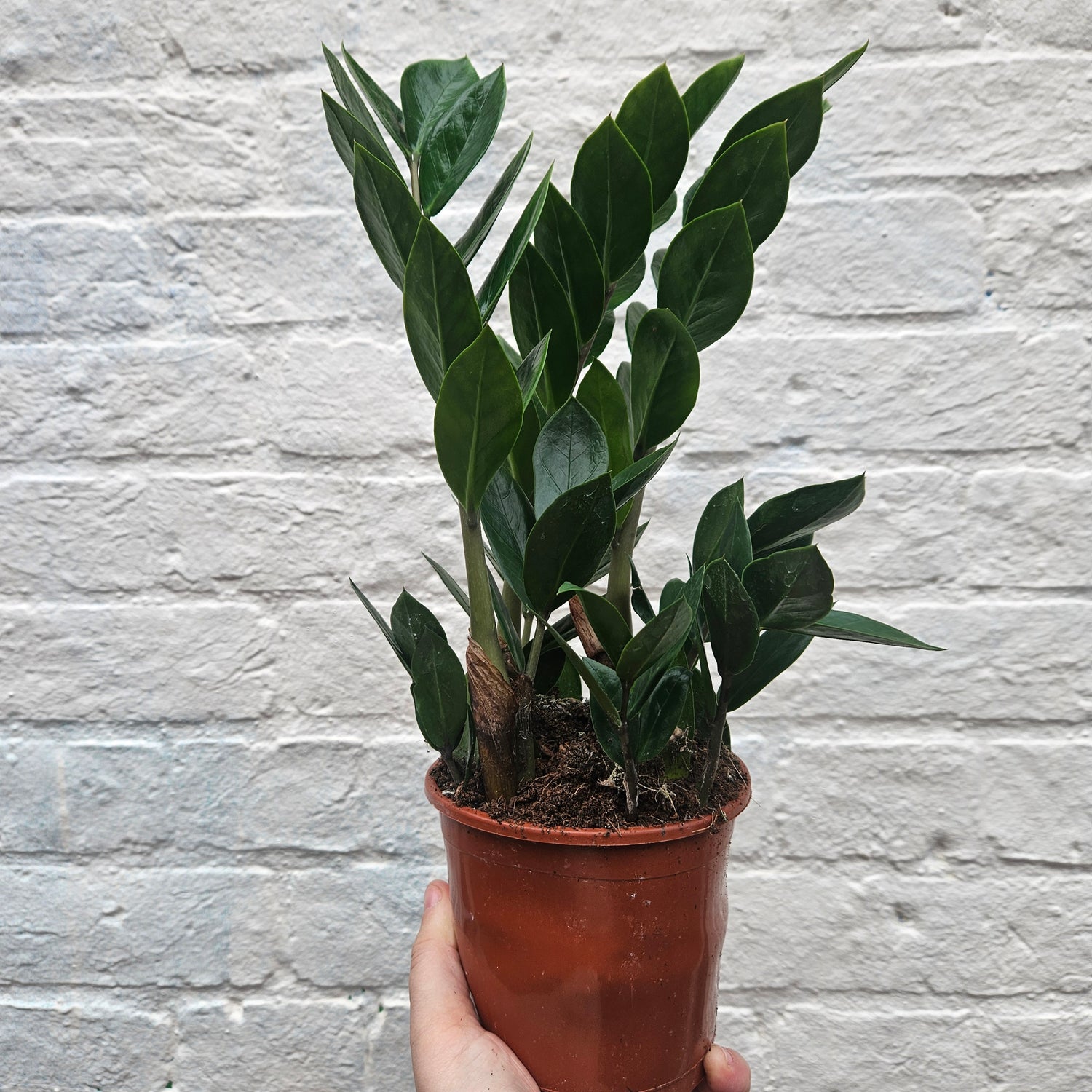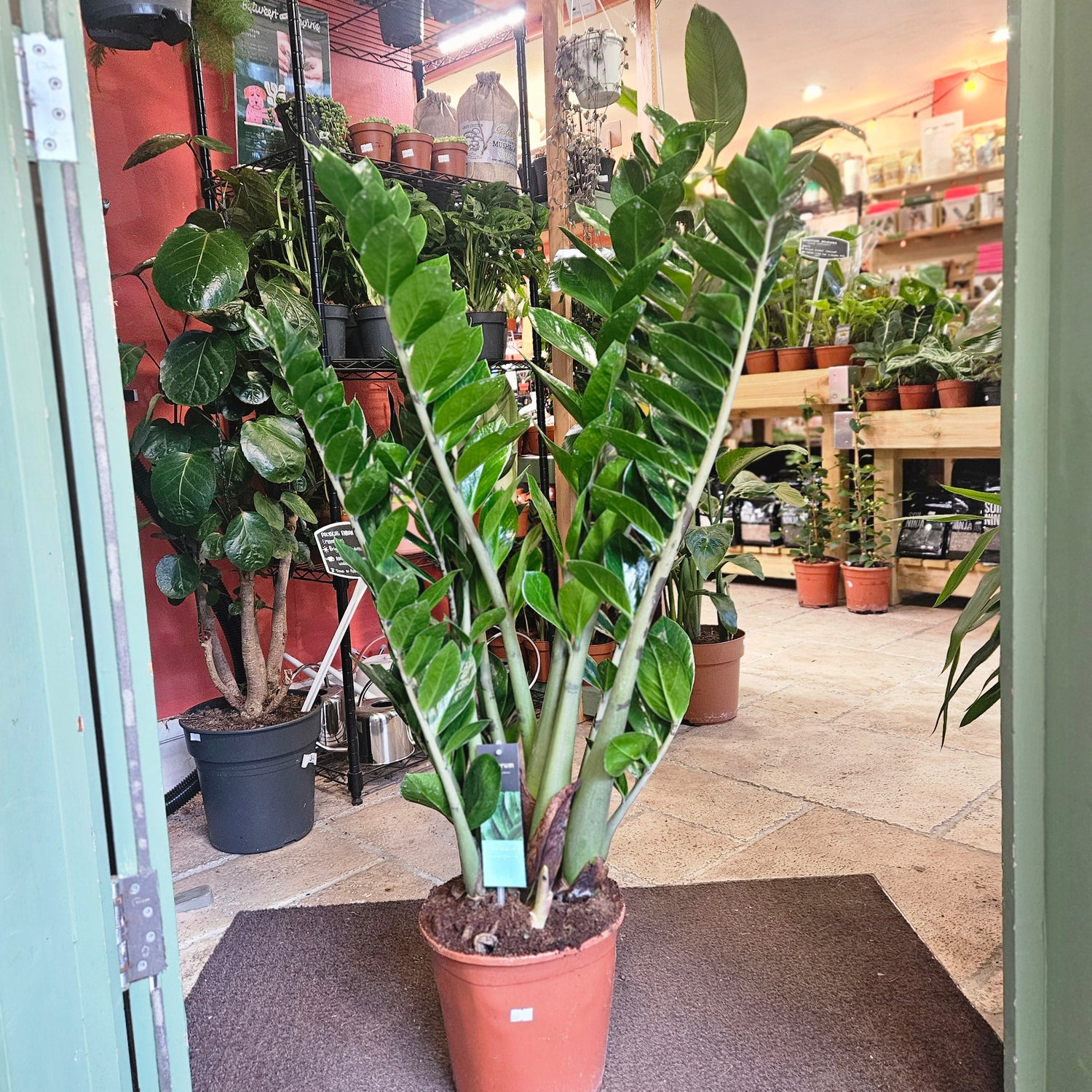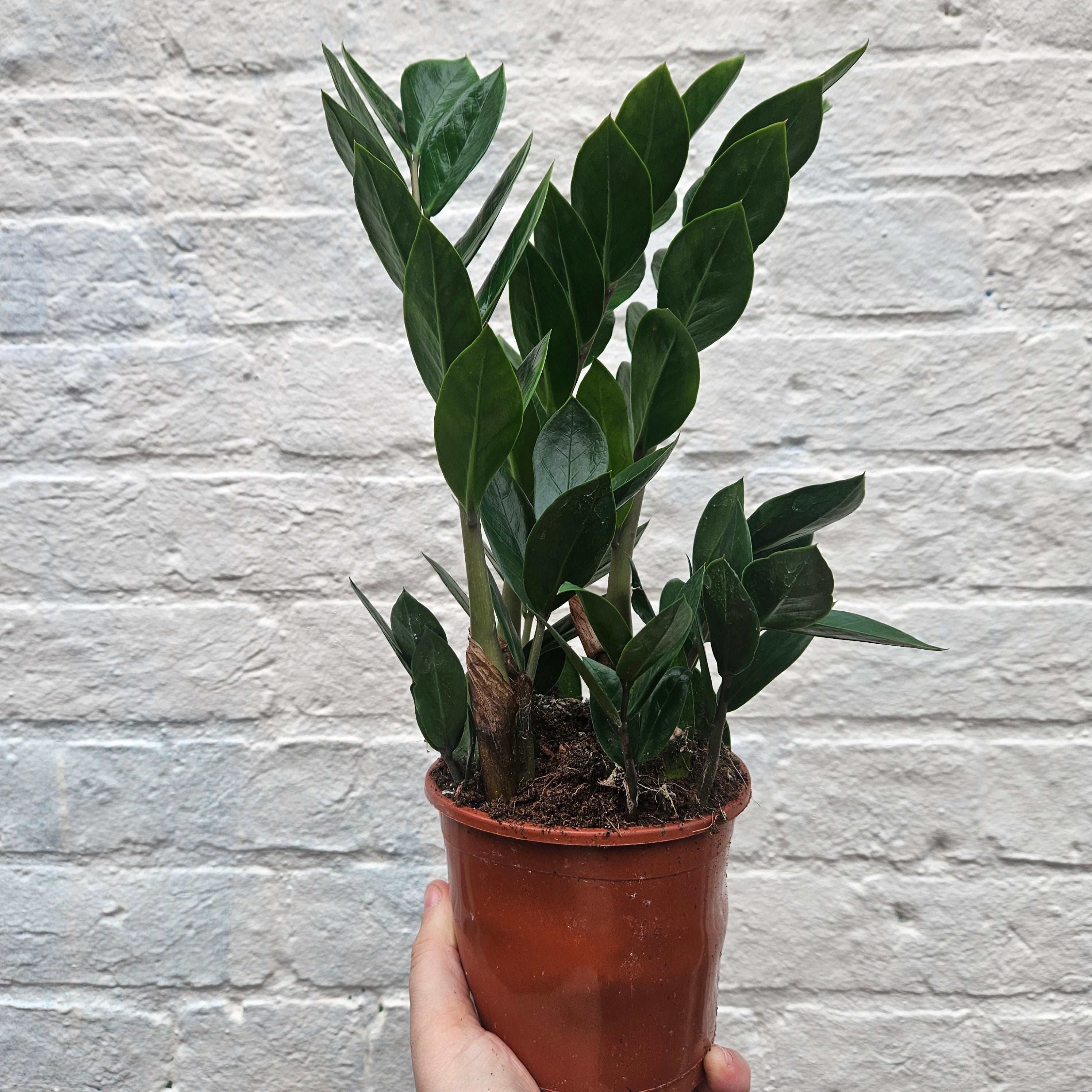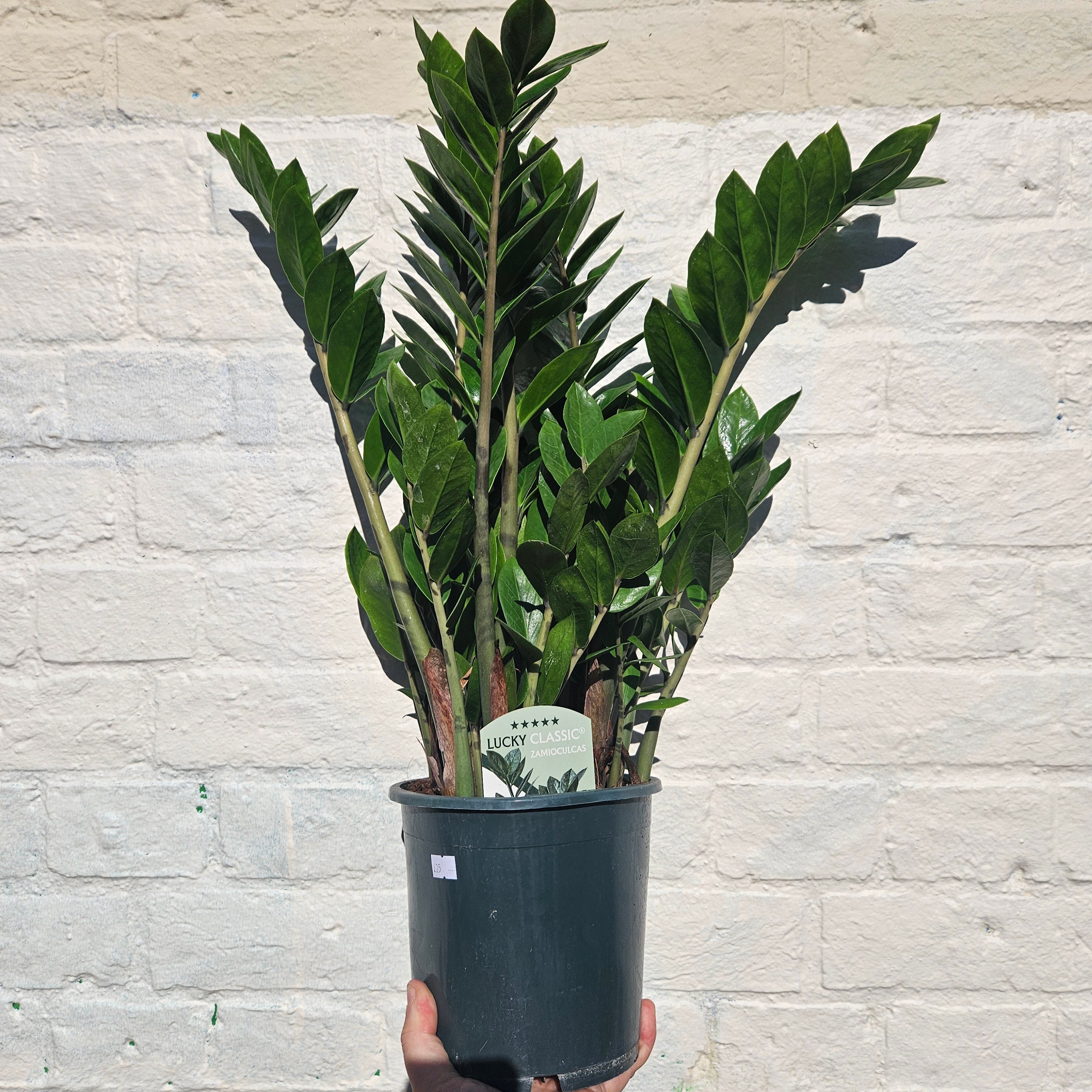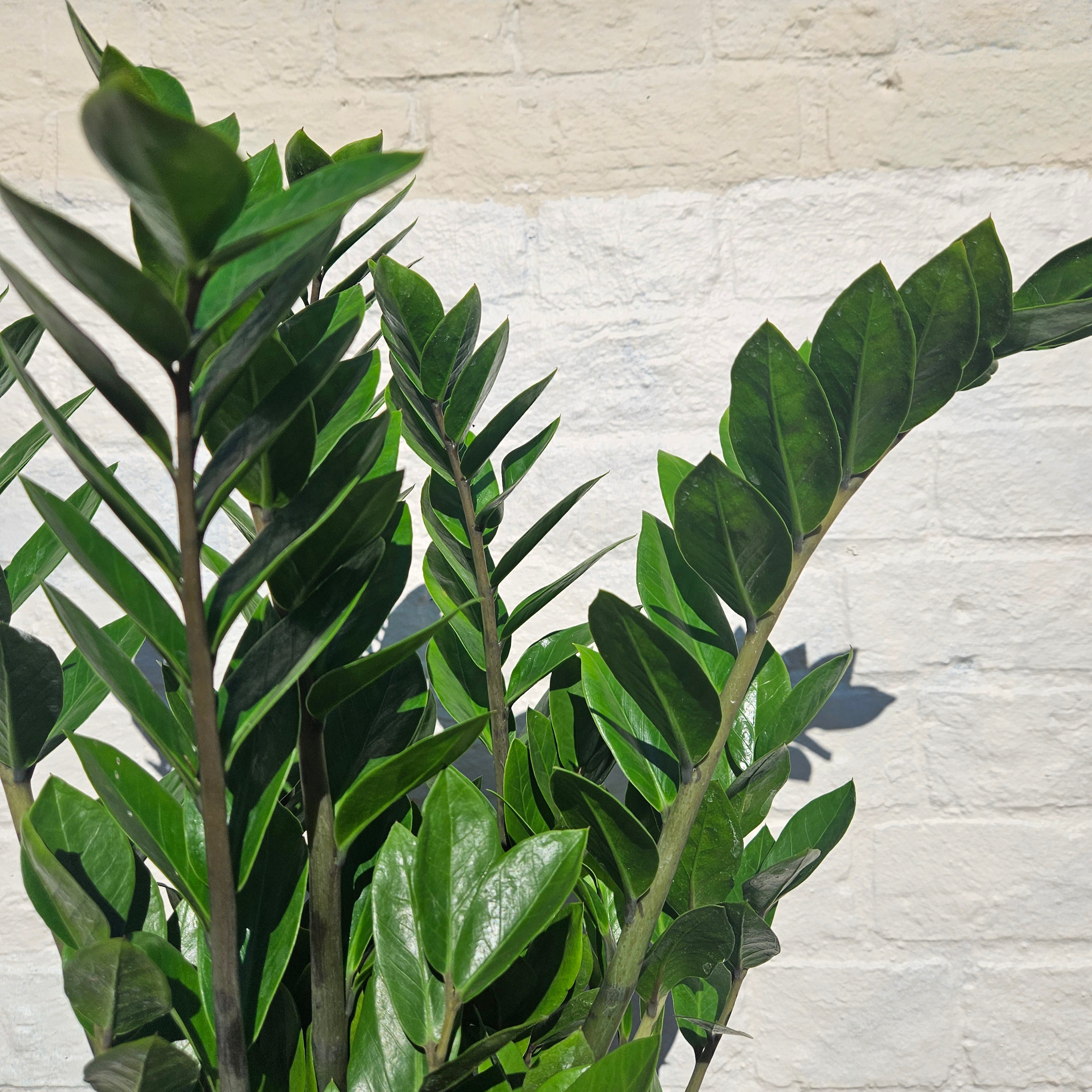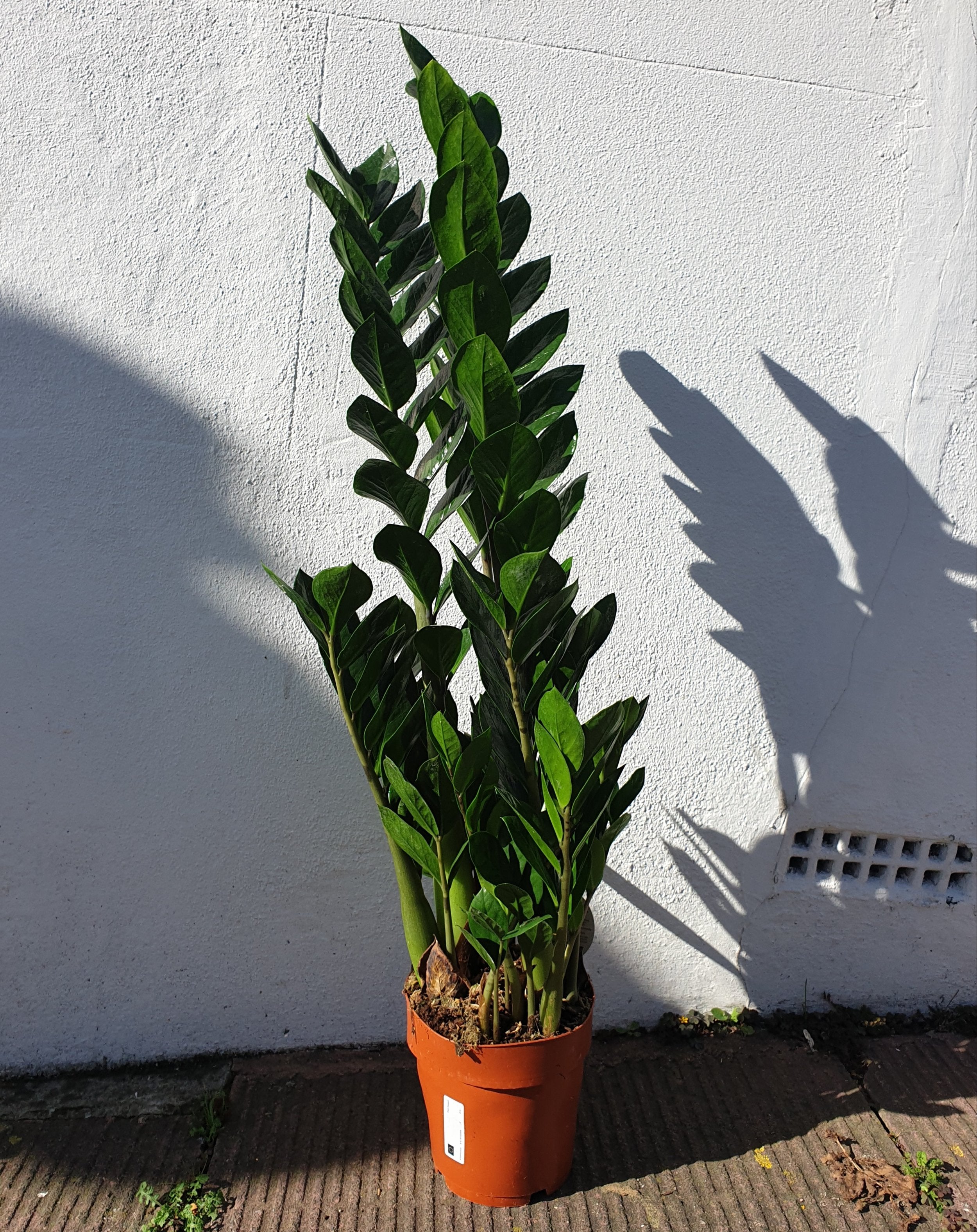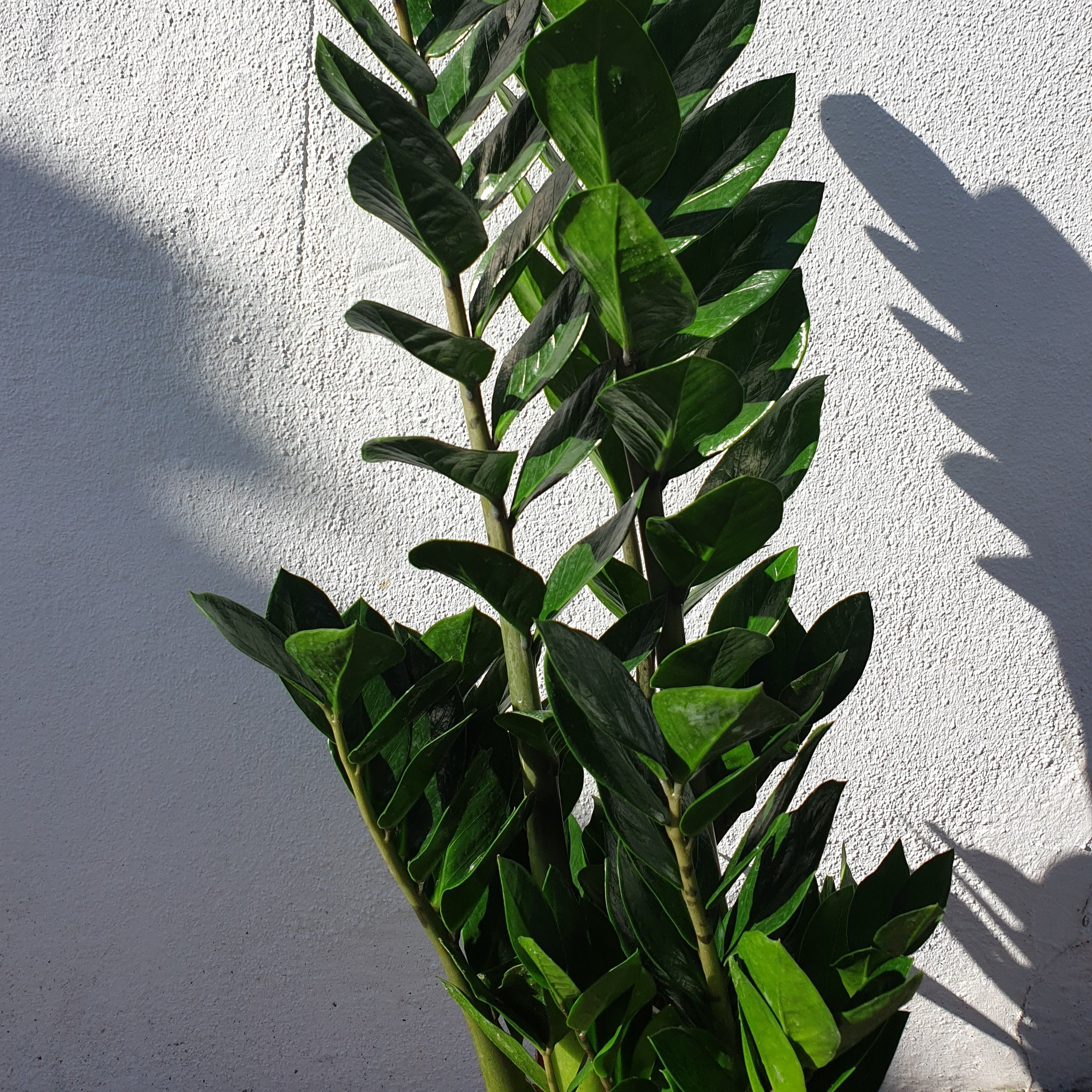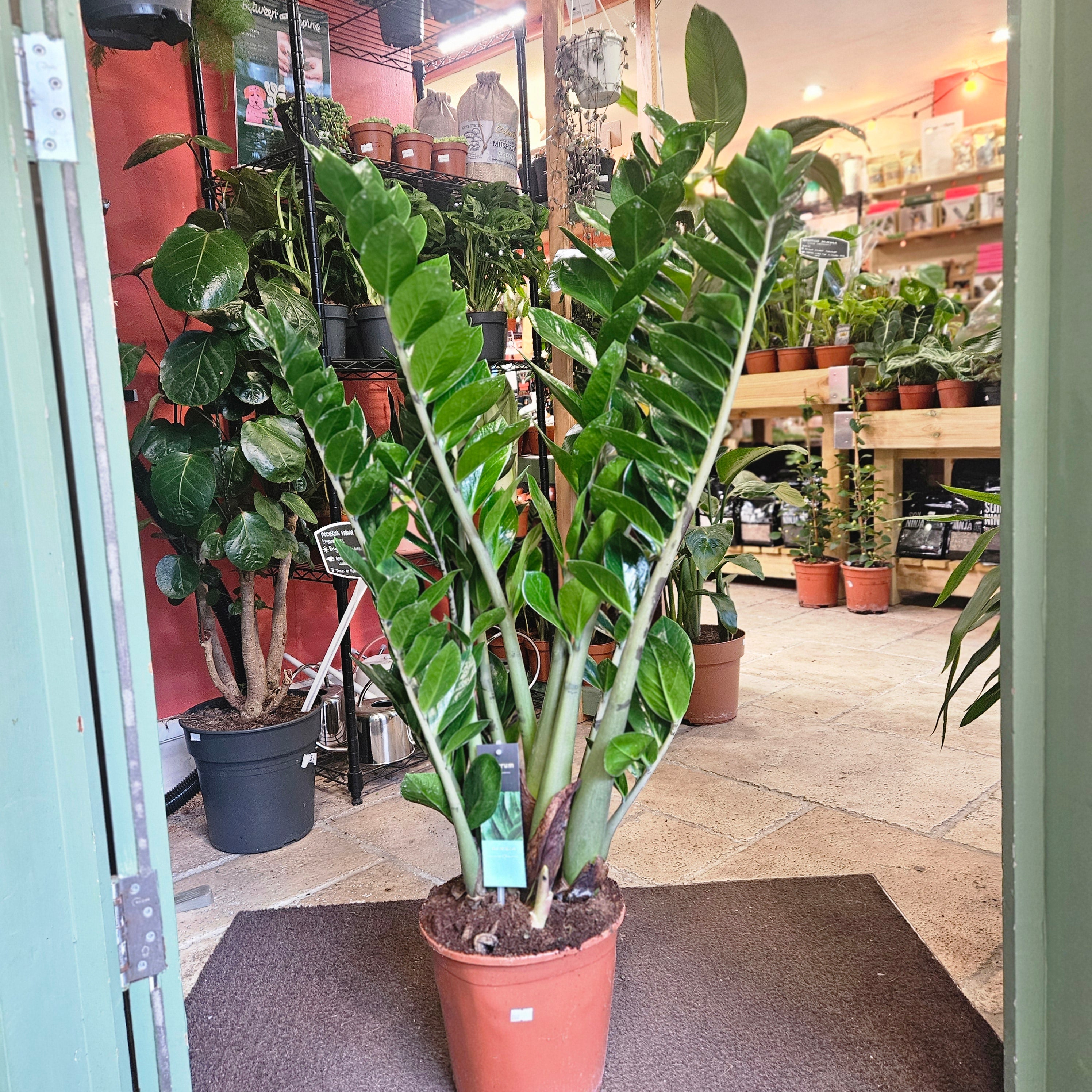A relatively ‘recent’ addition to the realm of houseplants, widespread cultivation of this plant began in 1996. Since the 1990’s the Zamioculcas zamiifolia aka the ZZ plant has become a familiar sight in homes. Here you will find out everything you need to know about the much loved ZZ plant.
ZZ Plant Overview
The Zamioculcas zamiifolia, more commonly as the ‘ZZ plant’ is a more ‘recent’ addition to the houseplant market, gaining popularity in the 1990’s. The ZZ plant is much loved for its dark green glossy oval shaped leaves and easy care. A slow grower it can grow up to 3 feet indoors. Part of the Araceae family, a group of flowering plants, this plant is able to produce small flowers which vary in colour from yellow to bronze but this is quite the rarity in a home environment.
Sometimes also known as a ‘Zanzibar Gem’, the Zamioculcas zamiifolia is native to Eastern Africa, in countries including Kenya, Zanzibar, and Tanzania. The ZZ plant is very low maintenance, being able to tolerate lower levels of light and fewer waterings making it the perfect houseplant for anyone. If you look just below the soil you will find large potato like tubers, which are called rhizomes. The ZZ plant stores water in these rhizomes, enabling it to survive periods of drought.

How to Look After a Zamioculcas zamiifolia (ZZ plant)
Light:
Tolerant of a wide range of light conditions the ZZ plant prefers bright, indirect light, like it would receive in its native Eastern Africa. Growing in the shaded canopy of larger trees, the ZZ receives dappled sunlight and has adapted to tolerate lower light levels, perfect for that slightly shadier spot in your house. Place your ZZ plant in a position where it can access filtered sunlight and keep away from direct sunlight as this will scorch the leaves.
Temperature and Humidity:
ZZ plants prefer temperatures between 15°C - 32°C. Native to parts of Eastern Africa this plant will thrive better in warmer temperatures. Avoid exposing them to extreme temperature fluctuations or cold drafts. ZZ plants will be fine in average household humidity and can cope with drier conditions. There is no need to mist this plant.
Watering:
When it comes to watering a ZZ plant, less is more. ZZ plants store water in their bulbous root system, helping them to survive droughts, which also means they can survive a missed watering or two.The best time to water your ZZ plant is when the soil has completely dried out. Water thoroughly until you can see water coming out the bottom of the pot and make sure to tip away any excess water. If your plant is in lower light conditions it will need less water then a plant that is in a brighter spot. The biggest killer of ZZ plants is overwatering.
Fertilising:
Feed your ZZ plant once or twice during the growing season (normally spring and summer). Zamioculcas zamiifolia are slow growers and won’t like to be over fertilised. Use a balanced feed containing nitrogen, phosphorus and potassium. Always follow the instructions on the fertiliser packaging for proper application. We sell both liquid and slow release fertilisers suitable for your houseplants.
How to Repot a ZZ Plant
ZZ’s generally need repotting every 2-3 years, or when their roots become crowded and start circling the base of the pot, especially if they are growing out of the drainage holes. A slightly deformed plastic pot is normal and doesn't necessarily mean it needs a repot, this is due to the large rhizomes warping the shape of the pot. ZZ plants prefer being slightly rootbound, this way the focus of energy is on foliage rather than root growth, larger pots can also cause a risk of root rot and transplant issues. Spring is the best time to repot, as the plant is actively beginning the new growth period.
How to Propagate a Zamioculcas zamiifolia
Propagating a ZZ is an exciting way to grow new plants.
Division method:
To propagate your ZZ plants, divide it during repotting. Carefully separate the plant into smaller clumps, by dividing the roots and rhizomes into separate plants. Plant these divisions in separate pots with fresh cacti and succulent potting mix.
Water Propagation:
Another method is to propagate ZZ plants in water, however this method is very slow and it can take up to 6 months for roots to grow.
Follow these steps:
- Choose a Healthy Stem: Select a stem
- Cut the Stem: Use a clean, sharp knife or scissors to cut it. Ensure your cutting is at least 6 inches (15 cm) long.
- Rooting: Place the cutting in water or moist soil. Roots should develop within a few weeks.
- Transplant: Once your cutting has well-established roots, transplant it into a pot with the appropriate soil mix.
Soil Propagation:
- For leaf cuttings, choose a healthy leaf, and cut off as close to the stalk as possible.
- Allow the cut area to callus over and place the bottom half into moist cactus and succulent compost.
- Place a clear plastic bag around the pot to increase humidity and pop in a warm spot with bright indirect light.
- Water when soil has become mostly dry. After a few months the leaf will start to form a rhizome as the base and roots, move to a bigger pot if needed.
How Often Should I Water a ZZ Plant?
Watering frequency depends on various factors like temperature and pot size. As a general rule, check the top two inches of soil and water when it's dry. Water less in winter and more frequently during the growing season.
Why Are My ZZ Plant Leaves Going Yellow/Brown/Curling?
- Yellow Leaves: Yellowing leaves can result from overwatering, poor drainage, or too much direct sunlight. Adjust your watering and lighting conditions accordingly. If the leaves are wilting and yellowing it is most likely to be due to overwatering, check the roots for rot and re-pot if necessary.
- Brown Leaves: Brown edges or spots may indicate low humidity, underwatering, or direct sunlight. Increase humidity and adjust your watering routine. Too much warmth, for example, if the plant is next to a radiator, can cause brown leaves that dry up and fall off.
- Curling Leaves: Curling leaves can be a sign of underwatering, over-fertilization, or low humidity. Ensure proper watering.
Are ZZ Plants Poisonous to Cats and Dogs?
Yes, ZZ plants are toxic to humans and pets if ingested due to the presence of calcium oxalate crystals. Keep them out of reach of children and pets to prevent accidental consumption. If ingested, seek medical attention immediately.
These expert tips should enable you to care for your ZZ plant and enjoy its striking foliage. Happy ZZ Plant growing!
